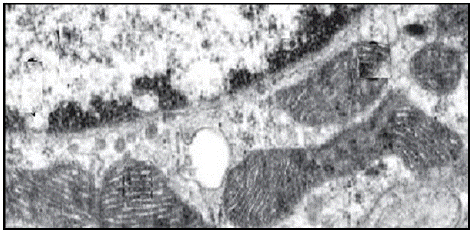
Review Article
Austin J Gastroenterol. 2023; 10(1): 1121.
Correlation of Diabetes, Salivary Gland Cancer and Pancreatic Cancer with Iodine and Cesium Radionuclides
Sebastiano Venturi*
Department of Hygiene, 61016-Rimini, Italy
*Corresponding author: Sebastiano Venturi Department of Hygiene, 61016-Rimini, Italy. Email: dr.venturi.sebastiano@gmail.com
Received: May 16, 2023 Accepted: June 16, 2023 Published: June 23, 2023
Keywords: Diabetes; Salivary gland and Pancreatic Cancer; Radio-iodine and Radio-cesium
Oral and salivary health in the medicine of past centuries was considered a mirror of the health of the whole organism and a tool of great consideration in semeiotics and diagnostics, in particular, of the digestive system diseases. Recent studies confirmed that oral health is of fundamental importance for many systemic pathologies. Oral diseases, which are highly prevalent worldwide, are present in many human diseases: cardiovascular, infections, diabetes complications, pancreatic cancer, etc. [1]. This review reports the role of iodine and cesium, two important elements in the human organism. The author reports previous studies of the antioxidant role of iodine, and of carcinogen action of radio-iodine and radio- cesium in correlation with Pancreatic (PC), Thyroid (TC) and Salivary Gland Cancers (SGC) and with radioactive fallout [2-4]. Acinar cells of salivary glands and the exocrine pancreas have similar histological and biochemical feature, secreting same amylase enzymes, cesium, iodides. The worldwide death rate of PC, diabetes, Salivary Gland Cancer (SGC) and TC are increasing, but the exact cause is still not known. In particular, it has been shown that radio-iodine released from Chernobyl caused an increase in the incidence of TC, diabetes and oral diseases in the former Soviet Union and in Fukushima, but TC mortality rates are generally low. PC mortality is also increased in the U.S.A. [5,6]. SGC and PC death rate increase more than that of other cancers because, unlike many other cancers, PC is still hardly curable. The worldwide environmental radio-cesium is strongly suspected and investigated for these increases of PC, pancreatitis with secondary diabetes (type 3c) by damage of the beta cells of pancreatic islets and also of salivary gland cancer and oral diseases [7-11].

Figure 1: The relative contributions of the major nuclides to the radioactive contamination of the air after an accident. Retrieved on 2009 from https://web.archive.org/web/20070121042708/http:/ato m.kaeri.re.kr

Figure 2: Temporal trends of deaths caused by the most frequent cancers and their forecast in the world from 2010 to 2030.

Figure 3: Sequence of 123-I total-body scintiscans of a thyroidectomized woman after intravenous injection of 123-I; (from left) respectively at 1, 6 and 24 hours. It is evident the highest and most rapid concentration of radio-iodide is in oral mucosa, salivary glands, pancreatic gland and gastric mucosa.
Upper right: I-concentration in salivary glands and oral mucosa after 1 hour.
Bottom right: I-concentration in salivary glands and oral mucosa after 24 hours. In normal thyroid, iodide- concentration is progressive, as in a reservoir [from 1% (after 30 minutes) to 5.8 % (after 48 hours) of the total injected dose [2].

Figure 4: Autoradiogram showing 137-Cs distribution in a pregnant mouse 6 hours after intravenous injection. Uptake is high in the salivary gland, pancreas and intestine. In fetuses, concentration is significantly lower than in the mother. The radio-cesium concentration in the pancreas is significantly higher (40-45% in Belarus children) than in the liver [36] (Reproduced from Nelson et al. with permission of Acta Radiologica, 1961).

Figure 5: Ionizing radiation of 137-Cs causes cytoplasmic vacuolization, dilatation of the endoplasmic reticulum and destruction of mitochondria of various sizes and morphology, and dense areas of chromatin was observed at the periphery of the nucleus [11].

Figure 6: The annual estimated incidence (2000–2014) of Salivary Gland Tumors (SGCs) ranges from 0.4 to 13.5 cases per 100,000 individuals. The incidence of SGCs has increased within the past four decades. It is estimated that the incidence of SGC in the USA from 1975 to 2015 increased from 1.1 to 1.3 cases/100,000 individuals [35].

Figure 7: Spatial distribution of Chernobyl radionuclides in the Northern Hemisphere 10 days after the explosion. U.S. Livermore National Laboratory modeling [7,13].
References
- Chiruvella V, Black W, Guddati AK. Increasing Trends in Mortality Rate among Salivary Gland Tumors in Non-Geriatric African Americans. World J Oncol. 2022; 13: 96-101.
- Venturi Sebastiano. Correlation between radioactive cesium and the increase of pancreatic cancer: A Hypothesis. Biosfera. 2020; 12: 81–90.
- Venturi S. Cesium in Biology, Pancreatic Cancer, and Controversy in High and Low Radiation Exposure Damage. Int J Environ Res Public Health. 2021; 18: 8934.
- Gemici C, Yaprak G, Ozdemir S, Baysal T, Seseogullari OO, et al. Volumetric decrease of pancreas after abdominal irradiation, it is time to consider pancreas as an organ at risk for radiotherapy planning. Radiat Oncol. 2018; 13: 238.
- Zalutskaya A, Bornstein SR, Mokhort T, Garmaev D. "Did the Chernobyl incident cause an increase in Type 1 diabetes mellitus incidence in children and adolescents?". Diabetologia. 2004; 47: 147–148.
- Chung YS, Harada KH, Igari K, Ishizuka J, Koizumi A. The incidence of diabetes among the non-diabetic residents in Kawauchi village, Fukushima, who experienced evacuation after the 2011 Fukushima Daiichi nuclear power plant disaster. Environ Health Prev Med. 2020; 25: 13.
- Yablokov AV, Nesterenko VB, Nesterenko AV. Chernobyl: Consequences of the Catastrophe for People and the Environment. ANNALS OF THE NEW YORK ACADEMY OF SCIENCES. 2009; 1181. file:///C:/Users/Standard/Downloads/Chernobyl_Consequences_of_the_Catastroph.pdf
- Venturi S. Prevention of nuclear damage caused by iodine and cesium radionuclides to the thyroid, pancreas and other organs. Juvenis scientia. 2022; 8: 5-14.
- Venturi S. Pancreatogenic Diabetes, Chronic pancreatitis, Pancreatic cancer and Radio-cesium. Researchgate. 2022.
- Tiffon C. Defining Parallels between the Salivary Glands and Pancreas to Better Understand Pancreatic Carcinogenesis. Biomedicines. 2020; 8: 178.
- Boraks G, Tampelini FS, Pereira KF, Chopard RP. Effect of ionizing radiation on rat parotid gland. Braz Dent J. 2008; 19: 73-6.